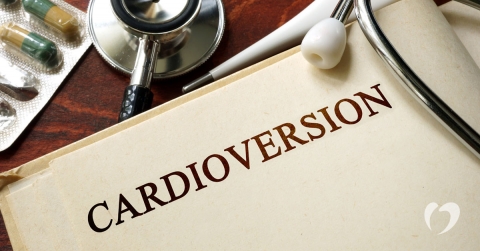Cardioversion to Correct Abnormal Heart Rhythms

Cardioversion is a treatment used to correct a heartbeat that is irregular or too fast. It attempts to restore a normal heart rhythm by resetting the heart’s electrical current to the typical pattern. Most often, it is used for patients who have been diagnosed recently with atrial fibrillation, a type of irregular heartbeat, though it is also used for tachycardia or atrial flutter.
What is cardioversion?
There are two types of cardioversion: electrical and chemical.
In electrical cardioversion, patients are sedated, then cardioversion patches are placed on their chest. These patches deliver an electrical current designed to bring the heartbeat back to normal rhythm.
In chemical cardioversion, patients are connected to an IV, which delivers medication that disrupts the irregular heart rhythm and gives the heart a chance to reestablish a normal rhythm. The medication used in these procedures is tailored to the specific type of arrhythmia for each patient.
Both procedures are done on an outpatient basis, and normal heart rhythm is reestablished immediately.
How does it treat heart rhythm issues?
The heart’s sinus node is responsible for controlling and maintaining heart rhythm. In some types of arrhythmias, the signal from the sinus node becomes erratic. Cardioversion interrupts the incorrect signal and gives the node an opportunity to reestablish a normal heartbeat.
How successful is cardioversion?
When used early in atrial fibrillation, studies have shown that cardioversion is successful up to 90% of the time. After cardioversion, arrhythmia can recur over time and does so up to 50% of the time. Sometimes, doctors prescribe anti-arrhythmic medication after a cardioversion to increase the long-term success rate.
What are the risks?
Though cardioversion is generally considered safe and low-risk, there is a chance that complications will occur. These range from minor skin irritation where the paddles were placed to more serious complications of blood clots and stroke. Though serious complications are rare, there are steps that physicians can take to lower risk even further. For example, a physician may prescribe a blood thinner to reduce blood clots before the procedure and lessen the chance of a dislodged blood clot causing a stroke.
If you have been diagnosed with atrial fibrillation or tachycardia and are considering cardioversion as a treatment option, contact our heart rhythm specialists at Oklahoma Heart Hospital today.




